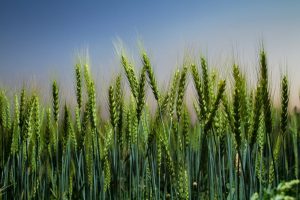New publication: Climate change impact and adaptation for wheat protein
This announcement by Courtney Brantley was originally posted on CIMMYT.org

Globally, wheat provides around 20 percent of the calories and protein in human diets. By mid-century, crop production must increase by 60 percent to meet global food demand and help reduce hunger, a challenge made even harder by climate change. “Climate Change Impact and Adaptation for Wheat Protein,” a study published in Global Change Biology in September 2018, examines why wheat grain protein concentration — a determinant of grain quality — is often overlooked in relation to improving global crop production in the face of climate change challenges.
“The impact of climate change on crops typically focuses on productivity; however, there are nutritional implications too,” says key contributor to the study Matthew Reynolds, wheat physiologist at the International Maize and Wheat Improvement Center (CIMMYT). “Since wheat also provides a significant proportion of protein in the diets of millions of resource-poor people, the negative impact of increased atmospheric CO2 on protein concentration in the grain is a disturbing fact,” stated Reynolds. “If not addressed, it could have a devastating impact on the health and livelihoods especially of marginalized people who cannot easily afford diverse sources of protein in their diet.”
Multi-location field trials, in addition to model testing, were used to systematically analyze the effects of increasing temperature, heat shocks, elevated atmospheric CO2 concentration, nitrogen, water deficiency and the combination of these factors on yield and wheat grain protein in the world’s main wheat producing regions. This study marked the first time that heat shock and high temperature interaction with elevated CO2 concentration was tested through an impact model. As noted in the study, “This is the most comprehensive study ever done of the effect of climate change on yield and the nutritional quality of one of the three major sources of human food security and nutrition.”
Read the full study here.




